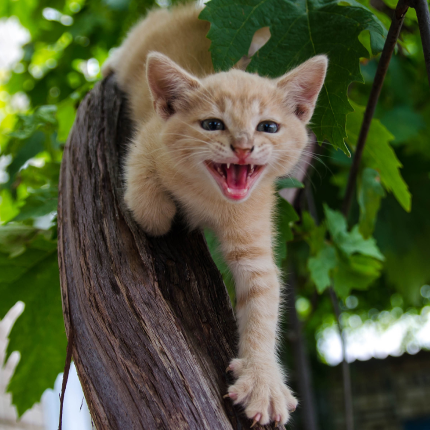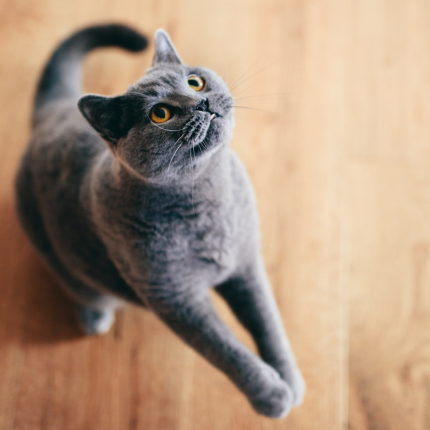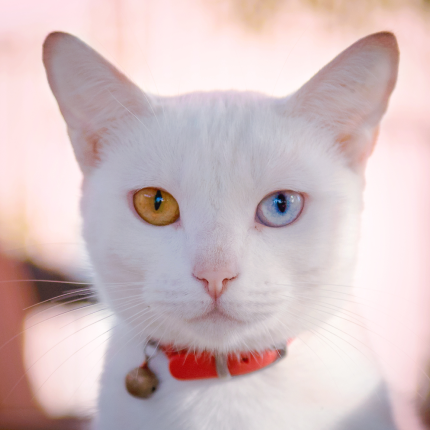Cat Meows: What Are They Telling Us?

Body postures, scent signals, and vocalizations all contribute to cat language. Most cats’ communication consists of tail talk and ear signals, which humans often overlook. Our undivided attention is drawn to feline yowls, growls, hisses, and purrs, especially at 5 a.m. But what are they trying to say?
Meowing types
Cats meow in four major categories:
- There are several murmur patterns, including purrs and trills.
- A cat’s vowel patterns include meows in all their variations (and diphthongs, too).
- In articulated ways, frustration is expressed through chirps and chattering.
- Hisses and growls with a restricted intensity pattern are warning signs.
According to experts, cat vocalizations may also be so subtle or pitched so high that only other cats can hear them.
Some cats are not vocal. Generally, Persians and blue Chartreux breeds are quiet. On the other hand, siamese cats are incredibly talkative; other cat breeds never stop talking.
Is there a meaning behind meowing?
Although cats use various vocalizations to communicate with each other, they seem to reserve “meows” for talking to their humans. Cat’s meows are demands, especially when they want to be fed or let outside. Their meows become more strident and lower-pitched as they become more passionate and insistent.
Meowing at night
Because cats are crepuscular, they sleep 16 hours a day and are most active at dawn and dusk (low light hours). No matter where they are, they are always on mouse patrol. There’s nothing wrong with it, but it isn’t ideal.
During the night, the determined and savvy cat may snuggle and sleep with you in the bedroom until it decides you have both had enough sleep. First, it gives you a loving head-bonk, nibble on your nose or toes, or drop toys on the top of your head. The meows will escalate if that doesn’t wake you up.
The cat scampers to its empty food bowl when you leave the bed. The yowling may be temporarily stopped by filling the bowl. When your mouth is full of kibble, it’s hard to meow. Congratulations, you have been trained by your cat.
What to do when your cat meows
When you give in to your cat’s meow demands, you are telling it that pestering you is effective, but remember that your cat might also be telling you something is wrong.
Health issues can cause excessive meowing. For example, it is common for cats to meow or howl when they are in pain. Deaf cats, old cats suffering from feline dementia, stressed cats suffering from separation anxiety, and cats with thyroid, heart, or kidney problems might yowl. Have your cat evaluated by a veterinarian if constant meowing is a new behavior.
Ignoring this behavior in otherwise healthy cats is the only way to stop them. You don’t feed her, play toe-tag with her, yell at her, spraying her with water, or give her any attention.
Consider investing in earplugs, closing the bedroom door, or confining the cat to another room. When this behavior has been going on for a while, it can take weeks or even months to get rid of it. But, unfortunately, before the behavior goes away, it will get worse. This is called an extinction burst by behaviorists, so be prepared. Either that, or you can remain at the beck and call of your favorite feline.

Featured Articles

Greebles and Cats: The Origin and the Meaning
You may have seen an internet sensation concerning cats labeled “greebles.” Feel out of the loop? We’re here to help you. In 2019, Reddit user /user/literallyatree commented on a Reddit post about a cat that looks like it’s trying to slap a ghost. This user commented: “My family calls things…

The Odd-Eyed Cat (AKA Heterochromia)
Cats are already beautiful and fascinating creatures, but people are bound to take notice when they have something as captivating as two different colored eyes. Odd-eyed cats always have one blue eye paired with either a green, yellow, or brown eye. This form of heterochromia occurs in other animals, including…

Polydactyl Cats: Just More Beans to Love
Polydactyl cats have become extremely popular in recent times. As a result, more and more people are interested in learning more about this six-toed cat and want to get one of their own. If you are a cat lover intrigued by polydactyl cats, you have come to the right place….
